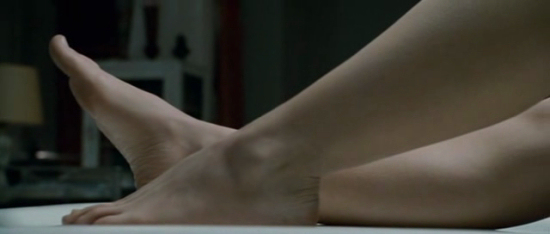But in a nearby bar, where I remember there being a lot of Smirnoff vodka, I met the woman who'd created the dream zombie realm and she confessed that by speaking to Bob Hope I'd unlocked the mystery and that now she would let me go, but she would wipe all my memories of the place. She explained to me that two of her zombie assistants were in fact mentally impaired family members, and that it was only in zombie form that they could speak to her. It was then that one of the assistants, a large, bald man, suddenly, to the woman's surprise, spoke to her in easy, perfect English, saying he loved her and forgave her. She started to cry I think, and it all felt like a shallow Lifetime movie wrapping itself up neatly with a moral.

I think the dream may have been created by Doctor Who mixing in my head with the movie I watched last night, After.Life which, while not great, was not nearly as bad as the majority of reviews say it is. Throughout most of its runtime, the movie plays with the tension created by the fact that we don't know if Christina Ricci's character, Anna, is really a dead woman who can only speak with the psychically gifted funeral director Eliot, played by Liam Neeson, or if Eliot's a madman who's drugged her and convinced her that she's dead. A lot of critics take issue with the fact that this tension is never resolved (though actually, I think the truth is made quite clear at a couple points), but this didn't really bug me. It seems like a lot of movie audiences these days have been conditioned to want a magic twist ending, but I thought the movie's attempts to use the scenario to explore issues of self-motivation were far more important--Neeson's character is weird either way, and he plays it really well with an intriguing irritable sensitivity that crops up oddly at times between tenderness. He seems intent on teaching Anna a lesson about appreciating life that's no less thought provoking for the fact that he's crazy.
It is less thought provoking for being somewhat shallowly explored with otherwise poorly defined characters, namely Anna and her boyfriend, Paul, played by Justin Long. An awkward sex scene and a dinner scene doesn't do much except to establish them both as shallow douchebags, which is par for the course with a lot of horror movies, particularly where the hidden fun is asshole protagonists getting killed. But it doesn't quite suit the movie's thesis. I'd like people who need some self examination, not people who have dialogue like;
"You changed your hair."
"You don't like it?"
"I didn't say that . . . It's very red. It's not really you, is it?"
The absence of a studio audience was glaring.
I admit, I mainly watched because I'd heard Christina Ricci was naked a lot in the movie, but we never actually get full frontal nudity, which creates the sort of awkward camera gymnastics David Cronenberg was able to avoid when Viggo Mortensen agreed to full frontal in Eastern Promises. It's particularly bad when Ricci on the table in the mortuary always has one leg slightly raised like a sunbather in a magazine.

But it was nice seeing Ricci again--I don't think I've seen one of her movies since Sleepy Hollow and, incredibly, she looks younger now. She plays a first or second grade teacher, and it was kind of amazing to see that she'd actually be more believable as one of the students.

The movie has some decent visuals, but Liam Neeson's character is by far the best reason to watch it.


No comments:
Post a Comment